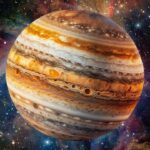The NASA James Webb Space Telescope has captured breathtaking images of galaxies, showcasing the beauty and wonder of our universe. One fascinating image shows a galaxy forming just a few hundred million years after the Big Bang, offering insights into the early stages of galaxy evolution. Another image features Gliese 12 b, a planet orbiting a cool red dwarf star, shedding light on planetary atmospheres.
The Webb Telescope’s observations also include stunning concepts of exoplanets like WASP-107 b, 55 Cancri e, and WASP-43 b, each offering a glimpse into the diversity of planetary systems in our galaxy. The telescope’s capabilities extend to capturing images of distant nebulae, like the Horsehead Nebula, showcasing the intricate details of cosmic phenomena.
One particularly striking image showcases the TRAPPIST-1 planets as they might appear from Earth, providing a speculative view of distant planetary systems. Additionally, the telescope’s observations of spiral galaxy IC 5332 offer insights into the structure and dynamics of galaxies in our cosmic neighborhood.
The James Webb Space Telescope’s images not only showcase the beauty of the cosmos but also provide valuable scientific data for astronomers. By studying these images, scientists can unravel the mysteries of galaxy formation, planetary atmospheres, and the evolution of celestial bodies. Each image tells a story of cosmic evolution and the interconnectedness of celestial phenomena.
As we marvel at these stunning images captured by the James Webb Space Telescope, we are reminded of the vastness and complexity of the universe. Each image invites us to ponder the wonders of deep space and the intricate processes that shape our cosmic environment. The telescope’s contributions to astronomy continue to inspire and inform our understanding of the cosmos, making it a valuable asset for scientific exploration.







